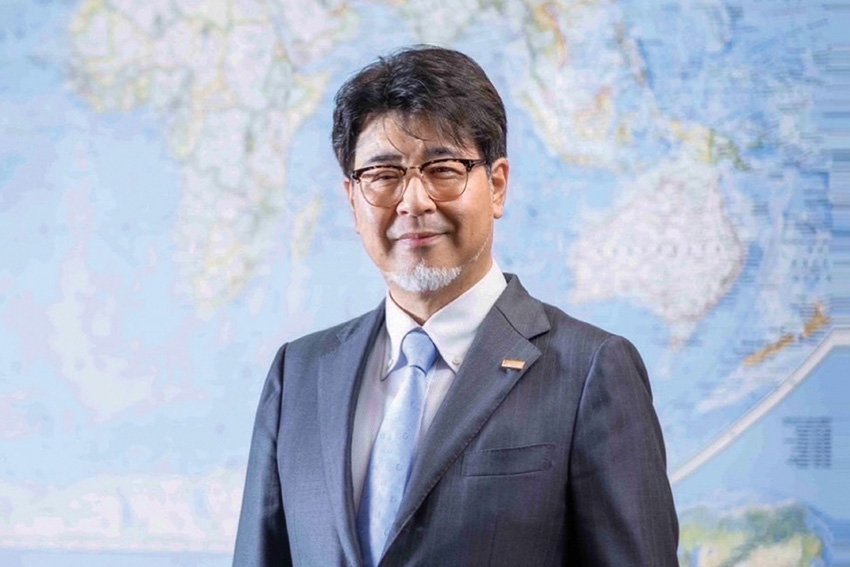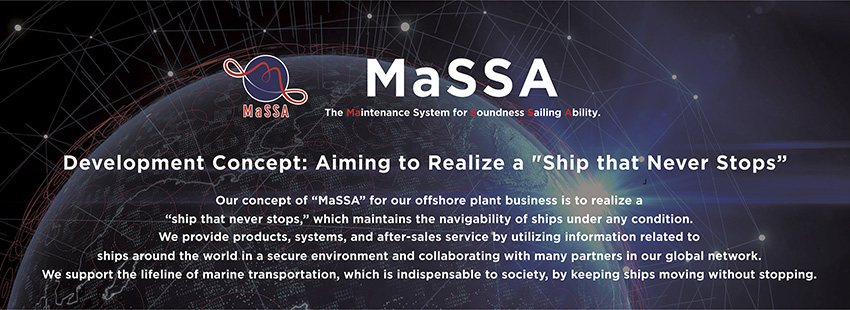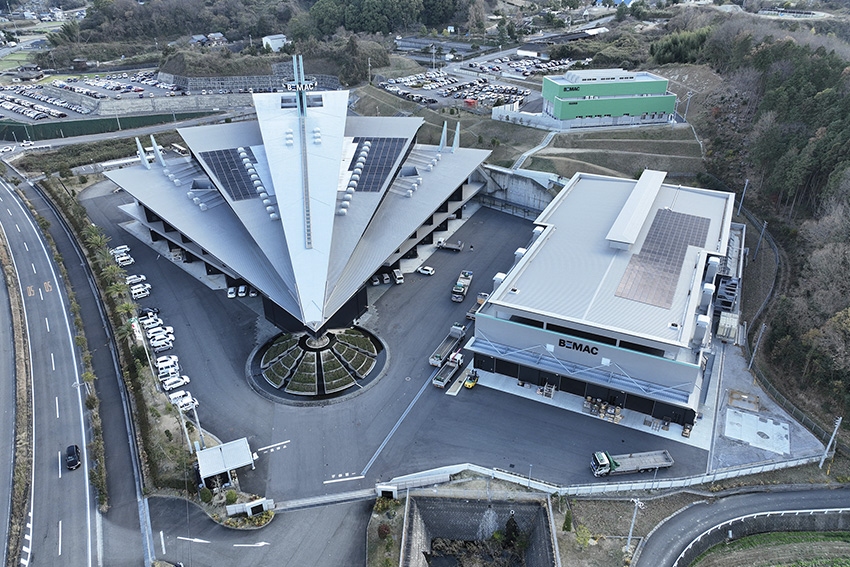BEMAC Corporation, formerly Uzushio Electric, founded in 1946, stands at the forefront of innovation in the shipbuilding and electric vehicle (EV) sectors.

Japanese companies are now facing a number of challenges around rising import costs and supply chain bottlenecks. However, Japan does have a reputation for high-quality, advanced technology, and now, with the weakened JPY against the USD, it has never been more effective to buy Japanese. Do you believe this to be the case? How can Japanese companies use these current conditions to their advantage?
From the perspective of Japanese CEOs, many have voiced that the depreciation of the JPY has not only positive effects but also a number of downsides. If you look at the rise of material costs, import costs, and labor costs domestically, there has been inflation. With this, the price of commodities has gone up, which are some pretty impactful negatives resulting from the Japanese economy.
In terms of shipbuilding, the industry is a united market across the globe. With the depreciation of the JPY, it has become easier for Japanese companies including ours to compete price-wise with Korean and Chinese companies. Now with the timing of the last “lost” 20-30 years Japanese are finally able to shift to the next stage. It is a matter of whether Japanese companies consider the current situation as an opportunity or a risk and change their movement according to how they perceive the market.

Another big challenge that has been getting a lot of attention in international media is the declining population that Japan has. This aging and dwindling population has resulted in a labor crisis, particularly with hiring skilled graduates. To what extent do you believe Japanese companies need to look abroad to secure new markets and bring in new talent to fill the expected labor shortfalls?
The situation in Japan requires a large amount of demand, although young workers are rapidly decreasing. The shipbuilding, data center and other plants in which we are involved are expected to see a huge increase in demand due to an increase in the market, so we do need a massive amount of manpower for the production and installation work considerably.
Designing equipment is another aspect that requires manpower, but in this case, we are talking about more sophisticated and skilled personnel. We are constantly looking for new hires both domestically and internationally.
Especially for international hiring, in today’s world, we are all encompassed by the internet, and data is all shared. We consider the global sphere as the area to hire new employees through our bases across the world. We receive constant applications, and we are also consistently hiring. We have over 2,000 employees with 34% being foreign employees.
One of the key pillars of your EV business is the Power Control Units (PCU) used in EV motors and batteries. When we look at batteries in the EV space, there is still uncertainty about what materials are the best to use. We’ve seen that with lithium-ion batteries, there has been a lot of development around charging capabilities, energy storage, and safety, but we’ve also heard about new technologies such as solid-state batteries, which many are sure are going to drive innovation. For your company in particular, what do you foresee as the ideal battery material of the future that you will use in your PCUs?
Speaking of lithium-ion batteries, we believe that this type will continue to dominate space for at least the next five years. Therefore, it is very important to envision what will become prevalent post-lithium-ion.
Lithium-ion batteries themselves are risky, and although they haven’t been featured much in the media, there have been many incidents where cars have caught fire, and even some PCC (Pure car carriers) have sunk due to fires caused by lithium-ion batteries. It is very important to consider safety. By mixing cobalt, manganese, and steel to increase safety, however, on the other hand, we would also reduce performance. Finding a new formula that would result in high performance and less risk while also not being dependent on rare-earth metals is important.
Recycling is another important perspective to look at. Cobalt and nickel are recyclable, but with steel and phosphate, the cost of recycling does not match the cost of newly procured products, so perhaps moving to new metals like manganese or zinc could be a possibility.
Your company already has a foothold in the shipbuilding industry. Why did you decide to venture into the mobility sector and what are your expectations or ambitions for the future with EVs?
Our company changed its name from Uzushio Electric to BEMAC (Beam Metrical Alternative Creation) in 2019. The purpose was to establish our corporate brand and label ourselves not only managing general electricity for marine productions and construction, but also utilizing DX and IT into our business. We have entered the EV field with the aim of strengthening the ship business by improving the operation of lithium-ion batteries and technological advances in battery management.
Is this only for the domestic market or are you also looking to expand overseas?
We actually don’t distinguish between domestic and overseas. Instead, we consider it one whole market.
Sustainability is becoming a core factor in almost every industry, but the shipping industry in particular has set goals of being carbon neutral by 2050. This is something that your company is putting a lot of research into, using EV technology to drive ships. This poses a number of different challenges, especially in regards to creating power conversion technology that can handle such huge amounts of power for battery charging and discharge. What sort of technology are you developing to try and overcome these challenges?
We have actively pursued the electrification of our vessels. The initial phase will involve smaller vessels like ferries which can hold about 100 passengers, which will require around 2000-3000 kilowatts of power. As the power demand increases, the equipment size also becomes bigger, so we are focusing on miniaturizing and enhancing the efficiency of high-power converters by utilizing silicon carbide power semiconductors for their superior performance.
The three key elements are the batteries, the inverters, and the motors for electrification of vessels. We established a power electronics research laboratory called GIRD at our headquarters in Imabari last year. There, we are conducting the simulations of electric vessels and the real-world testing with those three key main elements. It is a one-of-a-kind research laboratory with unique capabilities for researching electric vessels.
Establishing this research center will allow us to strengthen and enhance our research capabilities, providing a solid proof of reliability for our customers.
For large ocean-going vessels, we acquired a manufacturer of permanent magnet generators in Finland in February of this year. The Switch Engineering Oy has 2MW class-large permanent-magnet shaft generators, and in anticipation of an increasing number of new energy-compatible vessels such as methanol and ammonia will be built in the future, more efficient maintenance-free power generation systems will be required.
Across your company, you have a huge amount of diversity in terms of expertise. From industrial plant manufacturing to one-stop manufacturing services. Could you tell us some of the competitive advantages that set you apart from the competition?
Fortunately, we are located in Imabari City, which is a hub for the marine industry; the equivalent to Piraeus in Greece, which is one of the most famous Maritime cities in the world. Among the 2,400 registered ships in Japan, half of them are owned by companies located in Imabari City. Also, 30% of domestically built ships are built in Imabari. There is huge support from the local government, and other local entities such as banks and trading firms provide massive support to the companies here. Essentially the ecosystem for shipbuilding is pervasive in this small town of just 130,000 people. With all of this combined, new innovations happen at a very rapid pace which is helping the industry grow rapidly as well. Therefore, it makes sense that we are here.
The second advantage is that we provide one-stop power generation and operation systems for the variety of large and small plants, such as ships and factories, as well as global after-sales service. To put it concretely, we have constructed power generation, distribution, storage, control and monitoring systems. The information from these plants is used in AI and other technological areas to prevent accidents and for high-efficiency management. We aim for plants that do not stop with the power of electricity and DX and AI, and we have over 1000 specialties in those areas of electricity and ICT engaged in the company. The commissioning and installation (cable wiring) are also major strengths. We use Ship cable wiring more than 9,000km of cables per year, which is equivalent to the distance from Japan to Oslo in Norway.
Third, I would like to talk about our BEMAC long-term vision 2032. We have a 12-year vision and business plan for three business themes (marine plant business, industrial plant business, and EV business).
We are currently implementing our Long-Term Vision for 2020-2032. Our mission is to help society achieve the SDGs goals by maximizing greenhouse-gas emissions and creating safe, efficient, and never-stopping plants in response to growing global population and increasing electricity consumption through AI use such as Chat GPT. Our goal is to become the world's largest marine IT company, and in particular, in the offshore plant business, we are conducting technological innovations that specialize in three areas: power electronics (converting electricity), battery management, and AI-DX to achieve that goal.
What do you believe the Japanese shipbuilding industry should do to overcome the competition from countries like Korea or China, which are two of the leading nations in shipbuilding? How would your company contribute to overcoming the situation?
It is true that international shipbuilding has become more competitive. Technological competition in response to new energy sources such as methanol and ammonia is also intensifying.
Japan used to have a 30% market share of shipbuilding, but now this has dropped to 15%. In terms of the quantity and the size of ships, it is tough to compete with neighboring countries. However, in terms of the integration of AI and DX as well as the global movement towards automation of vessels, I see huge opportunities for Japanese companies including ourselves. Japanese companies have a high level of technology that has been developed for integration into the operations of ships. Together with thorough services, I believe Japan still has a chance.
It is also important to consider Korea and China as part of a huge partnering market, not only as rivals.
One way to enhance the competitiveness of Japanese shipbuilding industries is to upgrade and automate ships through AI and DX, and in this regard, we believe that us, BEMAC, is a leading Japanese manufacturer. We aim to realize the ship that never stops, based on the concept of "MaSSA (The Maintenance system for Soundness Sailing Ability)" in the development of various innovations. By gathering and utilizing all kinds of data, such as navigation, propulsion, loading and unloading, and fire prevention, we believe that this will not only prevent accidents, select optimal operating routes, and enable highly efficient operations, but will also be involved in the grading of ships, unmanned operations, and in the future, connection with other logistics, purchase and sale of ships, and insurance.
To this end, the unification of information protocols is an important technology and rule, and it is the uniqueness originated in Japan. If Japan's shipyards use this as a weapon, we believe it will become a major advantage.
MaSSA-One is your next-generation vessel support solution, which maintains ships in good conditions without any trouble for safety navigations by leveraging data. Could you tell us more about MaSSA-One?
Ten years ago, based on the idea that various issues in the shipping industry could be solved by DX, we launched the concept of "the ship that never stops," and divided its visions into three steps. The first step is MaSSA-One. This is what I have mentioned above: an on-board open platform that gathers all the information from the vessels to onboard IoT DATA SERVER conforming to ISO19847 and uses the data to prevent accidents and ensure highly efficient operations.
Thousands of marine accidents occur around the world per year, and more than 70% of these accidents are caused by human error of seafarers. To avoid this, we are using these data to develop applications that assist crew members. In addition, the International Maritime Organization (IMO) is advocating a GHG emission reduction strategy, EEXI (Energy Efficiency Existing Ship Index) Regulation and CII (Carbon Intensity Indicator) Fuel Efficiency Rating System will be introduced in order to reduce CO2 emissions during service.
MaSSA-One enables more efficient operation management and at the same time enables cost management in response to the introduction of new-energy sources. Over the past three years, we have already received orders for nearly 400 vessels, and it has been highly evaluated by shipowners and operation management companies that operate ships.
The second-step, MaSSA-Two, configures CIMC (Central Information Management) which improves the qualities, functions and performances consisting of the subsystems on the six important key functions of vessels such as navigation and communication systems, propulsion systems, engine systems, cargo handling systems, docking and unloading systems, and disaster prevention and safety systems. The “Designing the Future of Full Autonomous Ship” (DFFAS) is a project which is formed by 20 or more companies and our company is also a part of it. It is in progress currently and our CIMC has been applied to the project. DFFAS has already succeeded in the fully autonomous navigation of a round-trip 790km from Tokyo Port to Tsu Matsusaka Port in Mie in the first phase without human operation. This is the world's first case of unmanned operation in such rarely high congested sea areas like Tokyo Port. In this project, we also applied our Dynamic Positioning System technique to the automated leaving and arriving system at ports. We believe that the social implementation of unmanned vessel operation will be feasible in the near future through these efforts and the use of data-based applications in MaSSA-One.
The third, MaSSA-Three, is positioned as a multi-cloud platform for the sea. This is the future of evolving the use of data not only from vessel operation management, but also from the construction and sale of vessels to other logistics and industry ties.
When do you expect to have MaSSA-Three ready?
We expect it to be ready within ten years. We will use electricity, DX, and AI to solve these issues.

Principal office and factory in Imabari City, Ehime Prefecture
0 COMMENTS